Amorgos island has been on my bucket list for more than fifteen years. The day I decided to visit it, I thought it would be cool to shoot some polaroids. However, the harsh light of the Greek islands is always challenging when it comes to instant photography. But this never discourages me; on the contrary, I feel tempted to shoot polaroids and see how my cameras perform. And subsequently, I thought: is there a better way to celebrate traveling to Amorgos than using a polaroid camera for the first time?
Soon after booking the ferry tickets, I decided to buy a second-hand Polaroid Impulse AF. I read plenty of positive reviews about the camera and was curious to see if they were valid. The Polaroid Impulse was produced between 1988 and 1994, and the model I got was (probably) made in the UK back in 1991. That’s a thirty-year-old camera, but compared to my SX-70 or the Sun 660, it feels almost “new.”
I take polaroid photography seriously. Apart from trying to be as thoughtful as possible, I always keep an eye on the costs. The main expense in instant photography is the film and spending almost 20 euros for 8 shots is a costly hobby. Therefore, instead of packing loads of films for my journey to Amorgos, I only bought one 600 Polaroid film. I wasn’t sure if the camera could still take usable photos, but I decided to risk it.
Then, I packed the camera in my backpack and headed to the port of Piraeus.
*Some links are affiliate links. It means that if you buy something, I might earn a small commission at no additional cost to you.
What’s on the Polaroid Diaries: Amorgos island
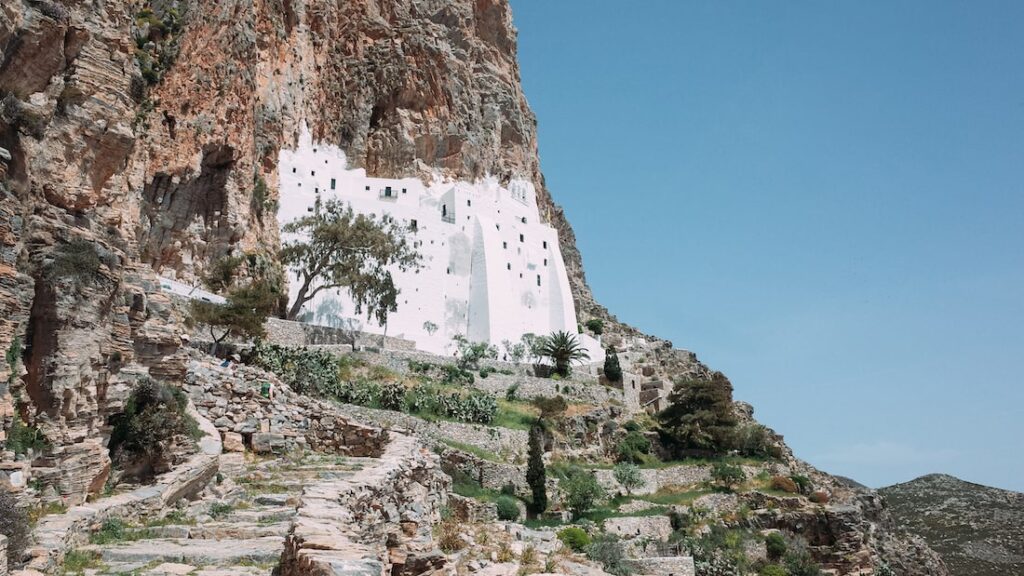
So, in this edition of the Polaroid Diaries, you will see the 8 photos I shot on Amorgos island with the Polaroid Impulse AF. I was lucky to visit Amorgos off-season, and the island was empty. However, the climate in the Cyclades is always mild, and the weather remains sunny throughout the year. The light was harsh, but it’s better to have intense light than no light at all.
Before starting with the Polaroid Impulse AF images, I’d like to tell you that at the bottom of this post, you’ll find the settings I used for this edition of the Polaroid Diaries. I believe that adding some info about the process adds some value to the reader’s experience, and if you found this article because you want to buy the Impulse AF, it’s good to know what the camera is capable of.
So, let’s start now with the Polaroids from Amorgos island with the Impulse AF.
Polaroid Diaries: Amorgos island with the Impulse AF
Amorgos is the island of “The Big Blue.” That’s a reference to the iconic Luc Besson movie with Rosanna Arquette, Jean-Marc Barr, and Jean Reno. A nice coincidence was that the movie was released in 1988, the year that the Polaroid Impulse AF was also released.
On the first day in Amorgos, I didn’t shoot any polaroids. I did some location scouting, and I tried to read the light. Then, on my second day on Amorgos island, I took my first photo with the Impulse AF. I visited the famous Hozoviotissa Monastery, which is visible only from the sea. And here’s the image.
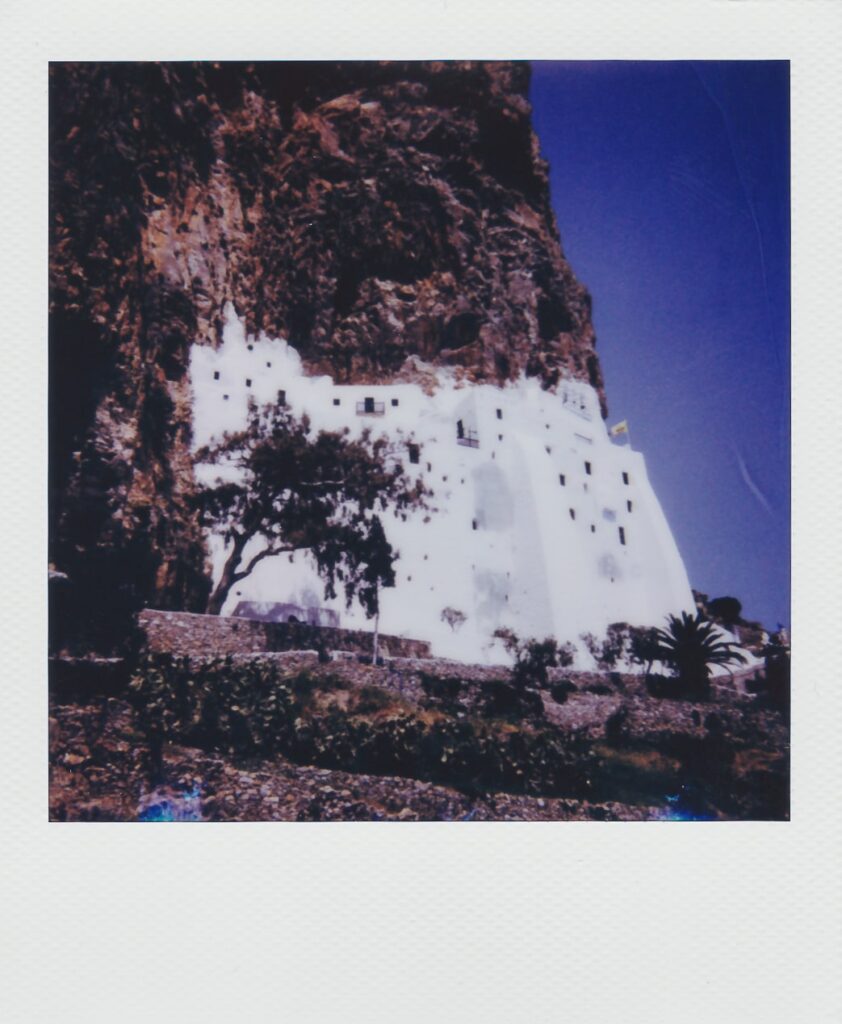
I was actually impressed by the image’s quality, and I couldn’t wait to shoot another polaroid. It didn’t take that long to find another spot. When driving around Amorgos island, you will come across goats and sheep. They will suddenly appear in the middle of the road, and you’ll have to be careful. Consider this as an Amorgos travel tip: drive slowly and be on the watch out for goats running on the asphalt. The peaceful animals were just having a break, and here’s the polaroid.
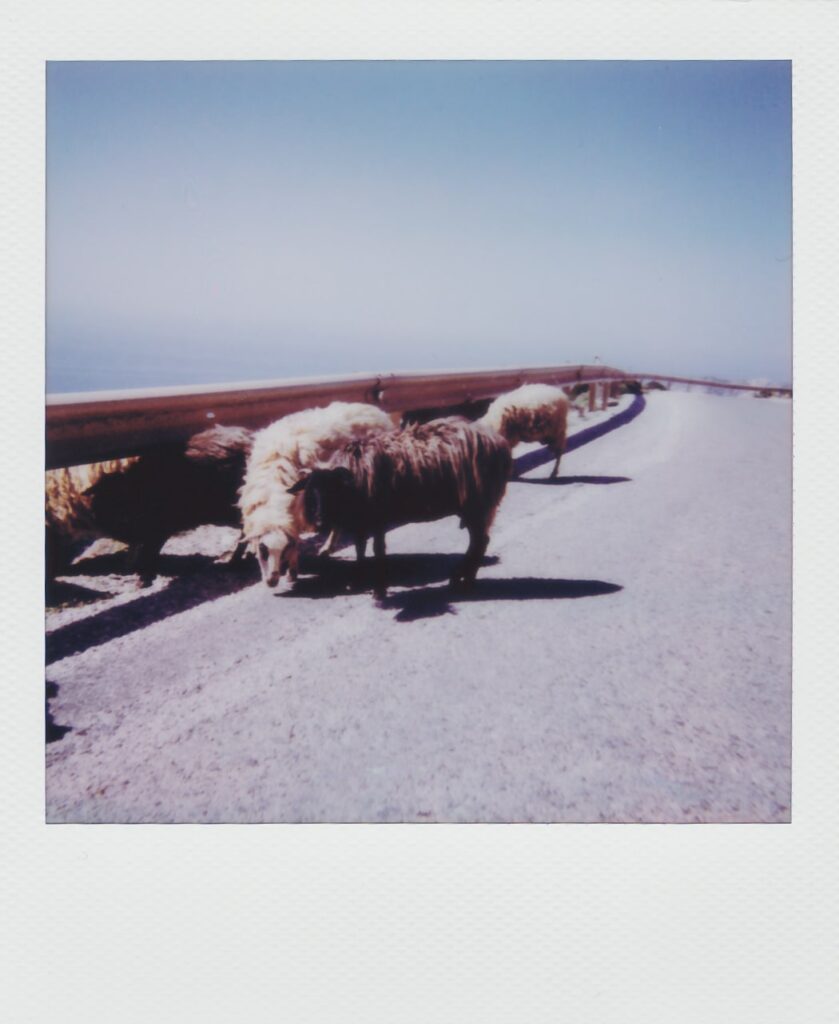
Amorgos has two ports, which is impressive for a Greek island. One of them is Katapola (Aegiali is the other) and is the closest to the Chora, the main settlement of Amorgos. Off-season, Katapola seems like a sleepy village by the sea. There are just a few visitors unwinding in the cafes at the harbor, but in the summertime, it is packed. Since my Impulse is an Autofocus model, I wanted to see if I could get some bokeh. However, after seeing the photo, I realized that I was a couple of steps too far. So, here’s the polaroid from Katapola, Amorgos.
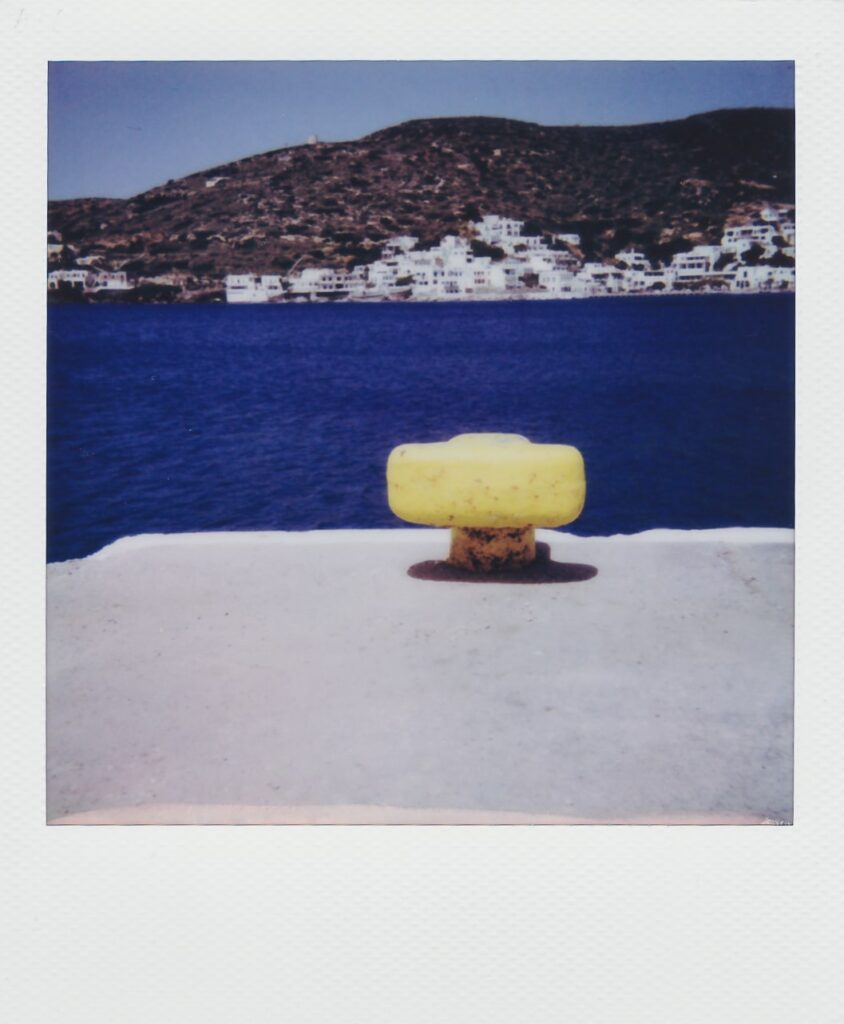
The Chora of Amorgos is a picturesque village consisting of narrow streets and white-washed houses. It often feels like a maze, and there are just a few tiny squares. I believe that, together with the Chora of Folegandros, it’s one of the nicest I’ve seen in the Cyclades. I thought of shooting a polaroid from one of these narrow streets.
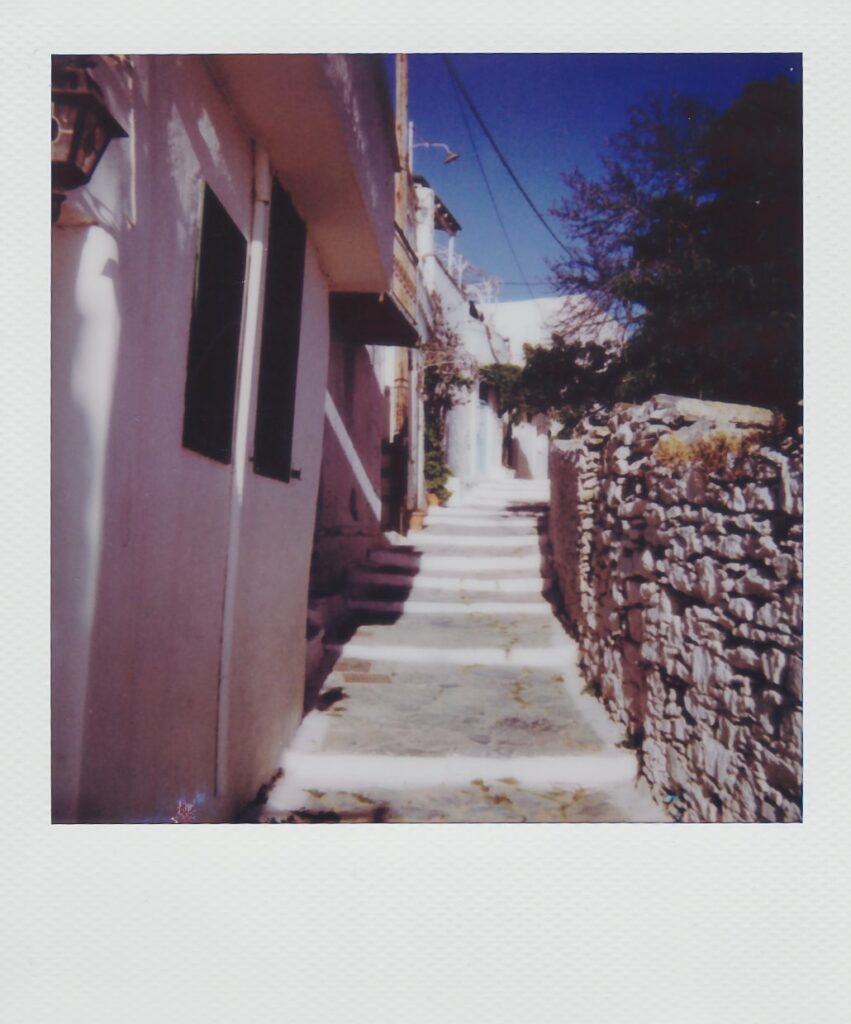
One of the most famous locations in Amorgos is the Kalotaritissa shipwreck. Back in 1980, a boat was shipwrecked due to stormy weather; fortunately, no one died. The boat is still a few meters away from the beach and has slowly become a tourist attraction. However, it is rusty, and it’s better not to swim there. Lots of people seem not to care, but the beach is nothing special anyway. Here’s a polaroid of the shipwreck while walking toward the beach.

Tholaria is probably the whitest village you’ll find in the Cyclades. It’s on the side of Aegiali port, and everything looks great: the houses, the streets, the tavernas, the churches. I, of course, wanted to have a polaroid from Tholaria, Amorgos; however, I don’t think it turned out as beautiful as it should have been. Anyway, here’s the image.
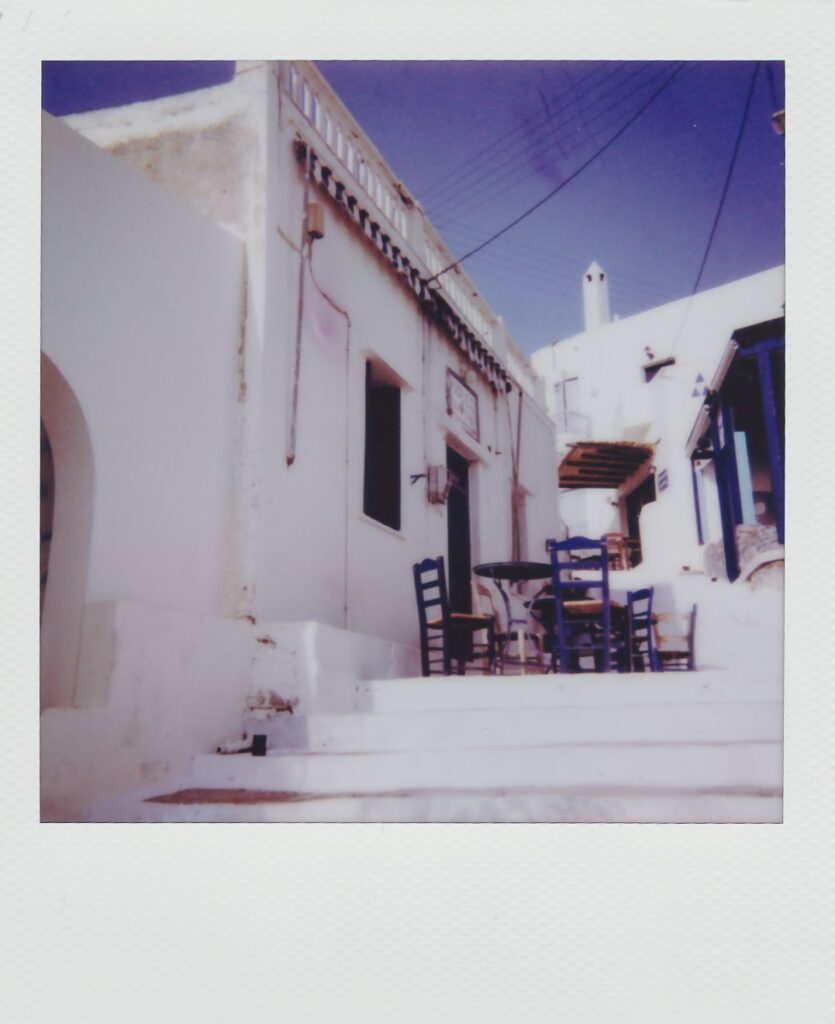
On my last afternoon in Amorgos, my friends and I decided to see where the road ended. We drove past the shipwreck and reached Kalotaritissa. There’s a small beach there (in general, the beaches are not the strongest point of Amorgos), and we wandered a bit around. Just a couple of people were there, enjoying the sunshine. I had two photos left, and I decided to shoot them. The first one is a close-up shot of a fishing boat standing ashore. The late afternoon light was sweet, and the colors turned out nice.
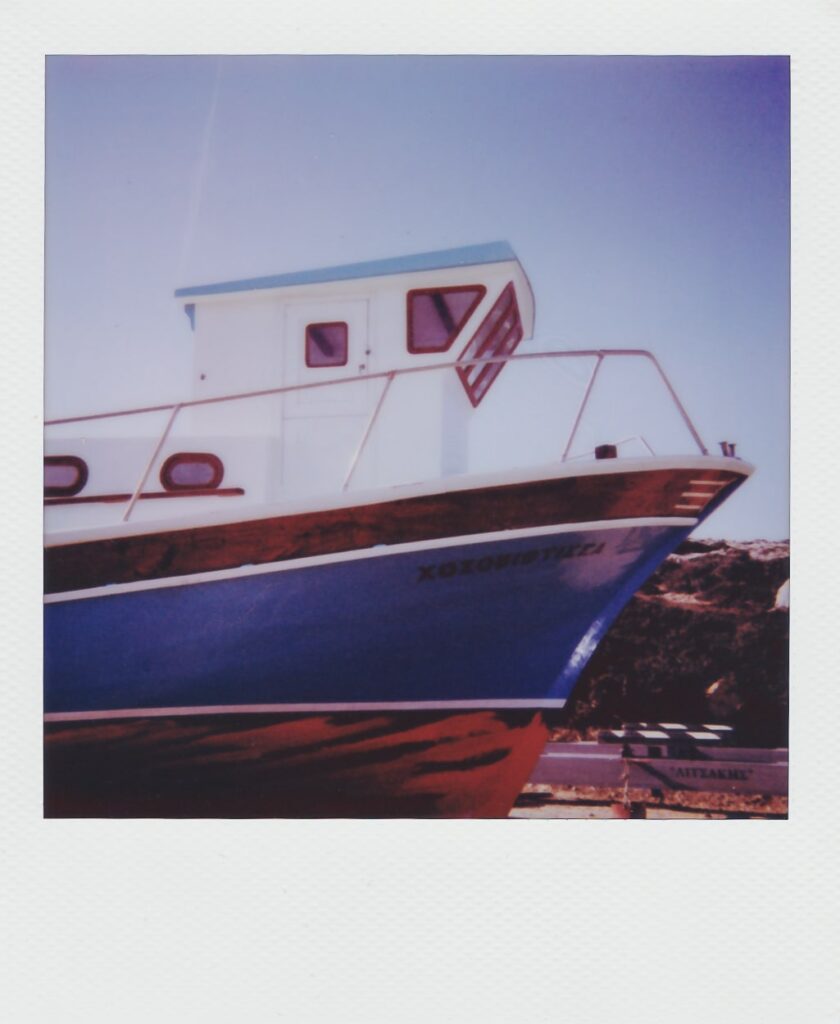
For the film’s final shot, I decided to experiment a bit. As I wrote, the light was sweet, and the Kalotaritissa Bay looked dreamy. I somehow wanted to catch that feeling on a polaroid and wondered how to do it. Since this is a Sonar Autofocus camera, I thought of focusing on the sea and getting a slightly blurry background look. In other words, I wanted to have a creamy (or dreamy) impression of the boats. I think it worked out pretty well.
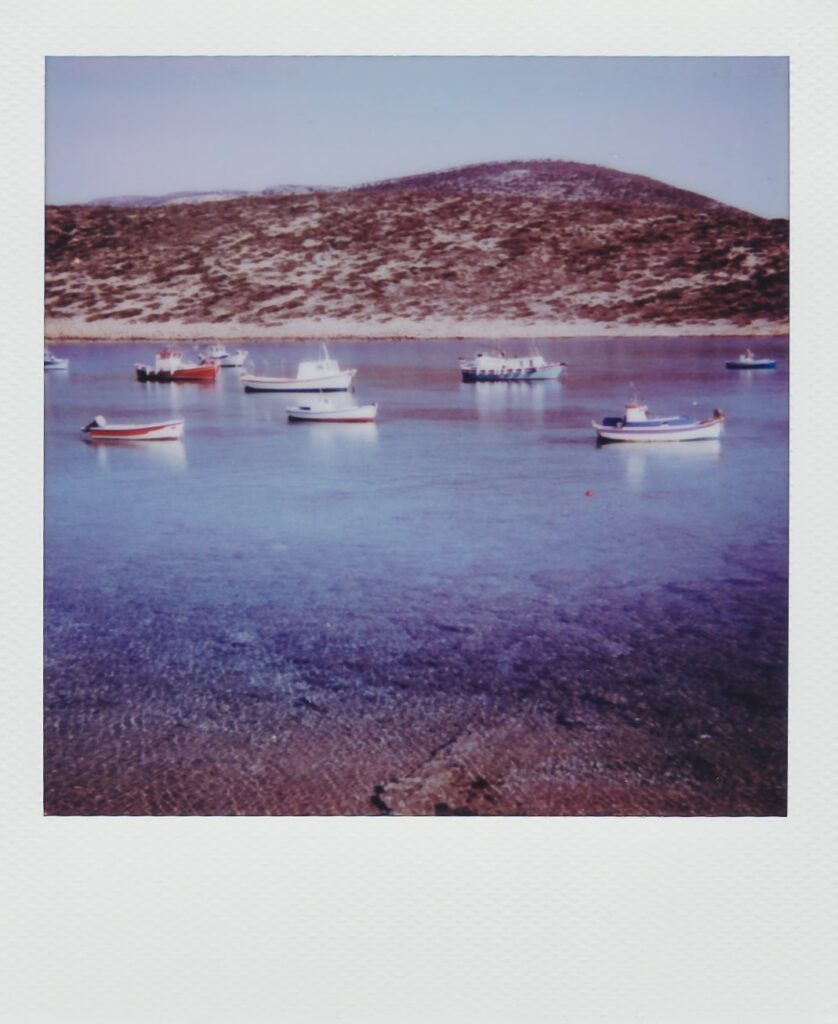
My Polaroid Impulse AF settings for this diary
So, in this section of my Amorgos island polaroids, you’ll find the settings I used. The truth is that it’s hard to give advice after shooting just one film. However, I plan to shoot more Polaroid Diaries with the Impulse AF, and I will also review the camera in the near future.
The Polaroid Impulse AF uses Sonar Autofocus. This means that the camera uses sonar waves to focus, which is really innovative. That said, you don’t have to worry about focusing like with the SX-70; everything happens the moment you press the button to shoot a photo. Therefore, focusing is nothing to worry about with Impulse AF.
Now, the Polaroid Impulse AF has a feature that might make lots of instant photographers uncomfortable: the flash is always on, and you cannot override it. I knew that when I bought the camera, and I was curious to see how the camera would perform under harsh sunlight. Shooting with a polaroid with the flash on might sound scary to some. However, the camera exposed perfectly to the images, and I was honestly surprised.
Apart from that, the camera has the usual exposure wheel: Lighten, Darken, and Normal. Since I wanted to see if the camera was functioning properly, I kept the exposure wheel in the middle and let the camera do the metering. Remember: the flash is always on, and exposing sounds challenging. The first photo turned out nice, so I decided to keep the wheel in the middle for all 8 photos.
Last but not least, here’s the line I always add: I didn’t post-process the polaroids, and what you see is what I got straight out of the camera. I scanned the files in TIFF, and the only touch is a +15 in sharpness for web optimization.
Overall, I was delighted by the camera’s performance. The Polaroid Impulse AF gave me some keepers already from the first film. In the following months, I will shoot more films with the camera, and I’ll carry on sharing the results.
And that’s it with the 21st edition of the Polaroid Diaries and the Amorgos island photos with the Polaroid Impulse AF. Don’t forget to subscribe to the mailing list below if you want to see more polaroids, camera reviews, and tips. And check out my Polaroid Zines.
*You can buy the newest (and freshest) films and Polaroid cameras directly at Polaroid’s official websites.*
The US Store | The EU store | The UK Store
**If there’s no availability in the official stores, search for second-hand Impulse AF cameras on Amazon.
More Polaroids: The complete Polaroid diaries
Polaroid Camera reviews: My Now+ review, Polaroid Sun 660 review & Polaroid OneStep+ review
Pin it for later

Sharing is caring. Share on FB or Twitter the Polaroid Diaries: Amorgos island with the Impulse AF.
Last Updated on October 22, 2022 by George Pavlopoulos

